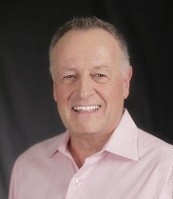- Video Library
- Fred Colen, Neovasc - Treatment of Advanced Heart Disease | LSI Europe '22
Fred Colen, Neovasc - Treatment of Advanced Heart Disease | LSI Europe '22

Fred Colen
Fred Colen is a seasoned business executive with years of experience leading small, medium and large medical device businesses throughout the world. Fred has been a successful business innovator in commercialization of new medical technology products. He was President/CEO of BeneChill, a brain cooling company and President of the Boston Scientific Cardiac Rhythm Management Group. Furthermore he has served as Boston Scientifics’ Chief Technology Officer for eight years. Born and raised in the Netherlands, he obtained a Masters Degree in Electrical Engineering with specialization in BioMedical Technology from the RWTH Aachen, Germany. He has served on several Boards: Mölnlycke Healthcare, Middle Peak Medical and College of Science & Engineering at the University of Minnesota.
Fred Colen
Fred Colen is a seasoned business executive with years of experience leading small, medium and large medical device businesses throughout the world. Fred has been a successful business innovator in commercialization of new medical technology products. He was President/CEO of BeneChill, a brain cooling company and President of the Boston Scientific Cardiac Rhythm Management Group. Furthermore he has served as Boston Scientifics’ Chief Technology Officer for eight years. Born and raised in the Netherlands, he obtained a Masters Degree in Electrical Engineering with specialization in BioMedical Technology from the RWTH Aachen, Germany. He has served on several Boards: Mölnlycke Healthcare, Middle Peak Medical and College of Science & Engineering at the University of Minnesota.

17011 Beach Blvd, Suite 500 Huntington Beach, CA 92647
714-847-3540© 2025 Life Science Intelligence, Inc., All Rights Reserved. | Privacy Policy







